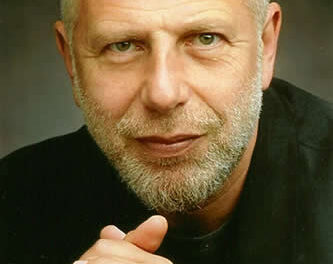Music Director Robert Gutter selected an enterprising program for the final fall-semester concert of the UNC–Greensboro Symphony Orchestra, presented on December 5 in Aycock Auditorium. This was a fine reward for music lovers who had trudged through the cold and foggy drizzle. While the balance of the concert was led by Gutter, the opening piece featured Matthew Troy, whose progress has been chronicled by CVNC. Troy was among the seniors and graduates honored during the last concert with the ensemble. Having received his Bachelor of Music degree from UNCG, studying viola under Scott Rawls, the budding conductor is now completing his Masters of Music degree, working with Gutter. With extensive local guest conducting experience behind him, he served as an Adjunct Professor of Music and orchestra conductor at Wake Forest University in the fall of 2004.
Troy led the student musicians in a dramatic performance of Beethoven’s Egmont Overture, Op. 84. There are about dozen players in each string section, and the brass was never allowed to drown the musical lines. Proper timing of the silences helped ratchet up the tension. The most consistent playing was in the soaring “victory symphony” that ends the work with a feeling of exaltation. After acknowledging the applause, the guest conductor took his place in the first stand of the second violin section for the rest of the concert.
Gerald Finzi’s Clarinet Concerto in c minor, Op. 31 (1941), exploits the full potential of a string orchestra contrasted with the clarinet, played on this occasion by Kelley Burke, principal clarinetist of the Greensboro Symphony and a UNCG faculty member. A member of the “Pastoral” school of English composers, Finzi’s experience as conductor of the amateur Newbury String Players is evident in the complex writing for divided strings throughout the concerto. In contrast to the efforts of the intense and sometimes harshly tinged string sections, often at loggerheads with each other, Burke’s clarinet spun seamless melodies that helped conjure a pastoral mood. The trills seemed effortless, and her agility throughout the fast-paced finale was unfailing.
Having a large string section paid dividends in giving full weight to the plush folk-like themes that abound in Alexander Borodin’s Symphony No. 2 in b minor (begun 1871, finished in 1876, and first performed in Petrograd in 1877). The composer was an important chemist who composed only when he was confined to his home with illness. Many of his closest friends wished him ill health so he would have more time to devote to composition(!). In the spirited opening movement, the full string sections’ robust unison playing of the first theme made a good foil to the gentler second theme, taken up by the woodwinds. Mary Pritchard led the horns in the gorgeous opening of the second movement. This romantic movement featured fine solos by clarinetist Kelly Smith and harpist Clarke Carriker. In the third movement, Smith’s lovely extended clarinet passages were augmented by briefer solos by flutist Allison Flores and oboist Emily Muldoon. The trombone section, led by Paul Pietrowski, and tuba player Brent Harvey were outstanding in the rambunctious last movement. More rehearsal time would probably have smoothed over the fleeting rough spots, of which there were more than usual.











